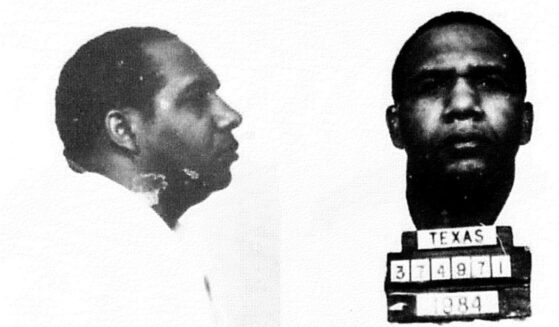Here's What You'll See Right After a Nuclear Blast and What to Do in Those Critical First 24 Hours
Although it’s unlikely, the possibility remains that a ruthless tyrant such as Russia’s Vladimir Putin or China’s Xi Jinping or some other geopolitical foe could one day target a U.S. city with a nuclear weapon.
If that were to happen, it would be helpful to, first, be able to identify that a nuclear blast had occurred and, second, know how to respond.
Dave Mosher gave us the 411 in Business Insider back in 2017 following an interview with Brooke Buddemeier, a health physicist and radiation expert at Lawrence Livermore National Laboratory in California.
Mosher told readers the first thing they’d see “is a flood of light so bright, you may think the sun blew up.”
He continued, “Wincing from temporary blindness, you’d scan the horizon and see an orange fireball. The gurgling flames would rise and darken into a purple-hued column of black smoke, which would turn in on itself. As a toadstool-like mushroom took shape, the deafening shock front of the blast would rip through the area — and possibly knock you off your feet.”
Buddemeier’s first piece of advice: “Don’t get in your car.”
“Don’t try to drive, and don’t assume that the glass and metal of a vehicle can protect you,” Mosher wrote.
This is because a car will not protect you from fallout, which he described as “a complex mixture of fission products, or radioisotopes, created by splitting atoms. Many of the fission products decay rapidly and emit gamma radiation, an invisible yet highly energetic form of light. Exposure to too much of this radiation in a short time can damage the body’s cells and its ability to fix itself — a condition called acute radiation sickness.”
Buddemeier said, “It also affects the immune system and your ability to fight infections.” Fallout can be stopped only by “very dense and thick materials, like many feet of dirt or inches of lead,” Mosher wrote.
The only circumstance under which you should remain in your car is if you are parked in an underground parking lot. The thick layers of concrete would protect you.
“The fireball from a 10-kiloton explosion is so hot, it actually shoots up into the atmosphere at over 100 miles per hour,” Buddemeier explained. “These fission products mix in with the dirt and debris that’s drawn up into the atmosphere from the fireball.”
During a blast, these fission products can shoot up to five miles into the atmosphere. “The larger pieces drop back down, while lighter particles can be carried by the wind before raining over distant areas,” Mosher wrote.
“Close into the [blast] site, they may be a bit larger than golf-ball-size, but really what we’re talking about are things like salt- or sand-size particles,” Buddemeier noted. “It’s the penetrating gamma radiation coming off of those particles that’s the hazard.”
Another reason not to get into your car, according to Buddemeier, is the fallout is being dispersed by “high-altitude winds” that are “often booking along at 100 miles per hour and often not going in the same direction as the ground-level winds. … So your ability to know where the fallout’s gonna go, and outrun it, are — well, it’s very unlikely.”
Buddemeier is an advocate of the motto “Go in, stay in, tune in.” The best action one can take is to get inside of a “robust structure” immediately, stay in there and tune into the news for further instructions. “Try to use whatever communication tools you have,” he said.
“Get to the center of that building. If you happen to have access to below-ground areas, getting below ground is great,” he advised. “Stay in 12 to 24 hours.”
The Centers for Disease Control and Prevention recommends remaining inside for at least 24 hours. The walls would “block much of the harmful radiation” and the radioactive materials would weaken “exponentially” over this period.
Hopefully, none of us will ever have to put this advice into practice.
Truth and Accuracy
We are committed to truth and accuracy in all of our journalism. Read our editorial standards.
Advertise with The Western Journal and reach millions of highly engaged readers, while supporting our work. Advertise Today.












